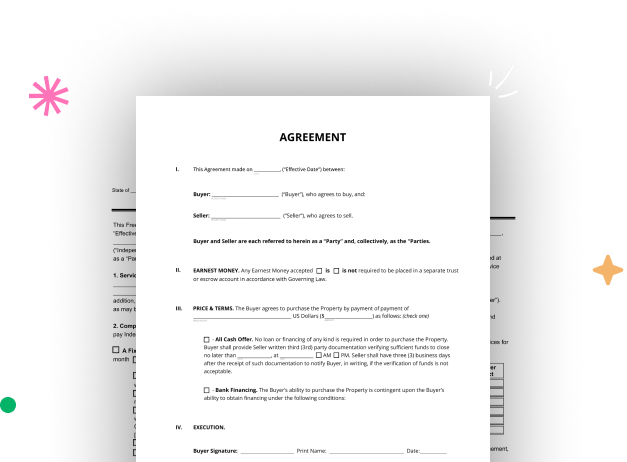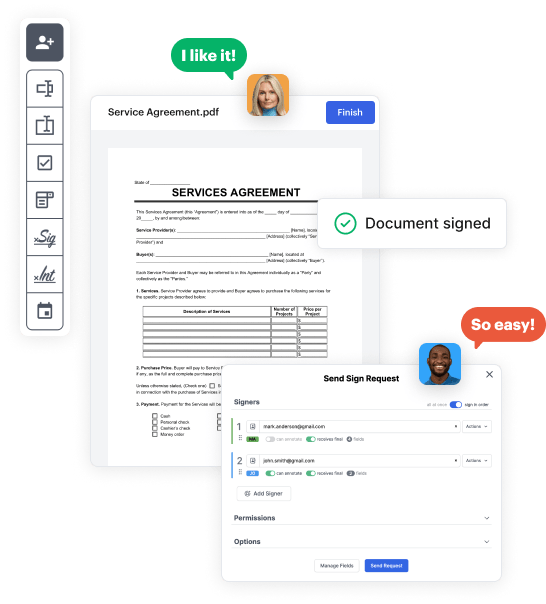

First, sign in to your DocHub account. If you don't have one, you can easily register for free.
Once you’re in, head to your dashboard. This is your primary hub for all document-based processes.
In your dashboard, choose New Document in the upper left corner. Opt for Create Blank Document to craft the Residential Rental Lease Agreement from scratch.
Place various items like text boxes, photos, signature fields, and other fields to your template and designate these fields to certain users as needed.
Refine your form by inserting directions or any other vital tips leveraging the text tool.
Meticulously review your created Residential Rental Lease Agreement for any typos or essential adjustments. Make use of DocHub's editing capabilities to enhance your template.
After finalizing, save your work. You may opt to retain it within DocHub, transfer it to various storage platforms, or send it via a link or email.